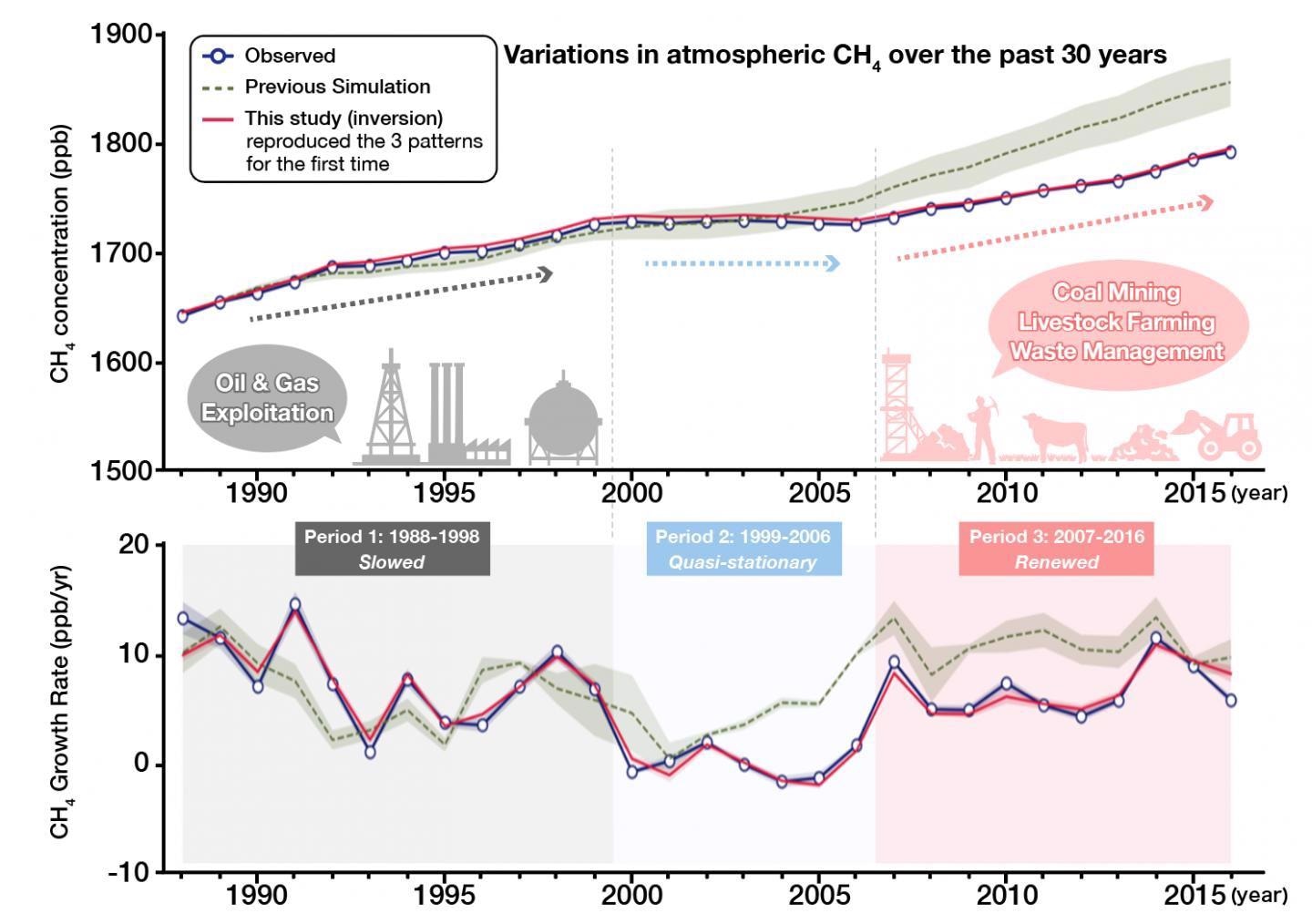Feb 1 2021
The most significant greenhouse gas, next only to carbon dioxide (CO2), is methane (CH4). The concentration of CH4 in the atmosphere has increased over two times since the preindustrial age because of the increased emissions due to human activities.

Image Credit: NIES.
Although CH4 has a global warming potential of 86 times that of CO2 over a period of two decades, it remains in the atmosphere for around 10 years, which is a much shorter period compared to CO2, which stays for several centuries.
Thus, it is predicted that controlling the emission of CH4 can be advantageous for a relatively shorter period toward the Paris Agreement goal of limiting global warming much below 2°C.
An international team of researchers analyzed the processes and emission sectors that resulted in the thus-far unexplained behaviors of CH4 in the atmosphere.
Published in the Journal of the Meteorological Society of Japan, the study offers a robust set of explanations for such behaviors.
In the last three decades, the growth rate, or the annual increase, of CH4 in the atmosphere varied drastically with three unique phases—the slowed (1988–1998), quasi-stationary (1999–2006), and renewed (2007–2016) growth periods.
However, there has been no scientific consensus on the causes of such variability in the growth rate of CH4.
Headed by Naveen Chandra from the National Institute for Environmental Studies, the research team integrated analyses of emission inventories and inverse modeling with an atmospheric chemistry-transport model and the global surface/aircraft/satellite observations to mitigate the crucial problem.
The researchers demonstrate that decreases in emissions from Russia and Europe since 1988, specifically from enteric fermentation and oil-gas exploitation, resulted in the slowed CH4 growth rates in the 1990s.
The decrease in emissions from natural wetlands owing to the effects of frequent El Niño and Mount Pinatubo eruption also played roles in the slowed CH4 growth rates.
In the early 2000s came the quasi-stationary state of CH4 growth. The growth rate of CH4 resumed from 2007, due to increases in emissions from coal mining predominantly in China and intensification of waste management and livestock (ruminant) farming in Tropical South America, South and Southeast Asia and North-Central Africa.
Although there has been a decrease in the emissions from coal mining in China in the post-2010 period, the emissions from the oil and gas sector from North America have increased. During the period of analysis, there was no evident increase in emissions caused by climate warming, including the boreal regions.
The results of the study point out crucial sectors (livestock, energy and waste) for effective approaches to achieve reductions in emissions for climate change mitigation. It is highly crucial to identify the location and type of the source to develop mitigation approaches and the execution of the Paris Agreement.
The research also emphasizes the need for more atmospheric observations with space and time density greater than the existing one.
Journal Reference:
Chandra, N., et al. (2021) Emissions from the Oil and Gas Sectors, Coal Mining and Ruminant Farming Drive Methane Growth over the Past Three Decades. Journal of the Meteorological Society of Japan. doi.org/10.2151/jmsj.2021-015.